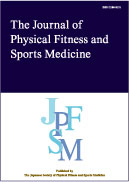3 巻, 1 号
選択された号の論文の18件中1~18を表示しています
- |<
- <
- 1
- >
- >|
Review Article
-
2014 年 3 巻 1 号 p. 1-10
発行日: 2014/03/25
公開日: 2014/03/20
PDF形式でダウンロード (1783K) -
2014 年 3 巻 1 号 p. 11-20
発行日: 2014/03/25
公開日: 2014/03/20
PDF形式でダウンロード (2493K) -
2014 年 3 巻 1 号 p. 21-26
発行日: 2014/03/25
公開日: 2014/03/20
PDF形式でダウンロード (1640K) -
2014 年 3 巻 1 号 p. 27-33
発行日: 2014/03/25
公開日: 2014/03/20
PDF形式でダウンロード (1588K) -
2014 年 3 巻 1 号 p. 35-42
発行日: 2014/03/25
公開日: 2014/03/20
PDF形式でダウンロード (1296K) -
2014 年 3 巻 1 号 p. 43-53
発行日: 2014/03/25
公開日: 2014/03/20
PDF形式でダウンロード (1748K) -
2014 年 3 巻 1 号 p. 55-64
発行日: 2014/03/25
公開日: 2014/03/20
PDF形式でダウンロード (1400K) -
2014 年 3 巻 1 号 p. 65-72
発行日: 2014/03/25
公開日: 2014/03/20
PDF形式でダウンロード (1223K) -
2014 年 3 巻 1 号 p. 73-83
発行日: 2014/03/25
公開日: 2014/03/20
PDF形式でダウンロード (4063K) -
2014 年 3 巻 1 号 p. 85-90
発行日: 2014/03/25
公開日: 2014/03/20
PDF形式でダウンロード (1178K) -
2014 年 3 巻 1 号 p. 91-100
発行日: 2014/03/25
公開日: 2014/03/20
PDF形式でダウンロード (1687K) -
2014 年 3 巻 1 号 p. 101-110
発行日: 2014/03/25
公開日: 2014/03/20
PDF形式でダウンロード (1596K)
Short Review Article
-
2014 年 3 巻 1 号 p. 111-114
発行日: 2014/03/25
公開日: 2014/03/20
PDF形式でダウンロード (1407K) -
2014 年 3 巻 1 号 p. 115-120
発行日: 2014/03/25
公開日: 2014/03/20
PDF形式でダウンロード (1218K) -
2014 年 3 巻 1 号 p. 121-129
発行日: 2014/03/25
公開日: 2014/03/20
PDF形式でダウンロード (1458K)
Regular Article
-
2014 年 3 巻 1 号 p. 131-137
発行日: 2014/03/25
公開日: 2014/03/20
PDF形式でダウンロード (1303K) -
2014 年 3 巻 1 号 p. 139-145
発行日: 2014/03/25
公開日: 2014/03/20
PDF形式でダウンロード (1411K) -
2014 年 3 巻 1 号 p. 147-154
発行日: 2014/03/25
公開日: 2014/03/20
PDF形式でダウンロード (1363K)
- |<
- <
- 1
- >
- >|
